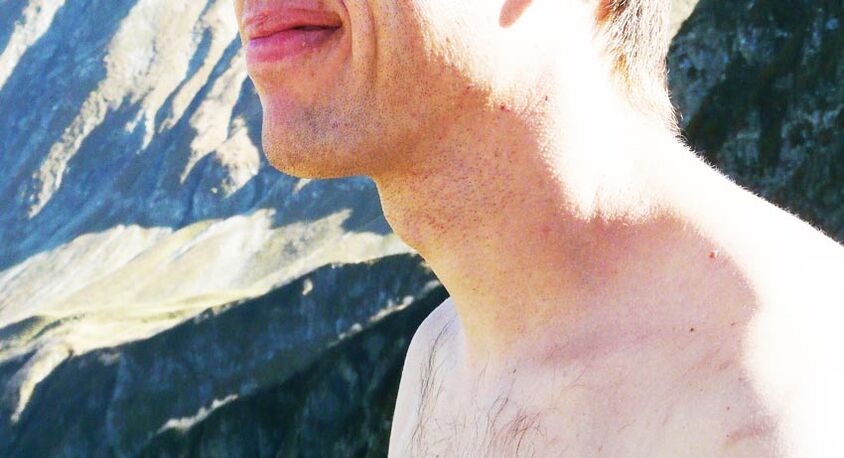
The osteochondrosis of the cervical column is known and well studied.At the moment, most of the work population suffers from this disease.This type of osteochondrosis develops not only in the adult population, but quite often in teenagers, youth osteochondosis thus called.
The cervical department is the most mobile part of the spine, therefore the load of this department is quite large.The disease develops gradually, is characterized by frequent exacerbations, which can lead to a significant reduction in the patient's quality of life.
The causes of the disease
The causes of the disease, as a rule, are different and can depend on the patient's age.We highlight the most frequent:
- violation of the exchange of football-phosphorus of any etiology;
- various traumatic back damage;
- Un balanced load on the spine (hypodynamia or vice versa the influence of the improved load);
- Cardiovascular system diseases;
- congenital malformations of the spine;
- change of posture, included by scoliotic type;
- circulatory disorders, which lead to a deterioration of the power of the intervertebral disc;
- Dystrophic violations relating to the age of bone tissue.
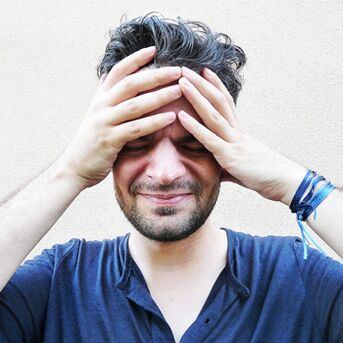
In adolescence, the main causes of the development of the disease are trauma, not balanced physical activity (training process).In older patients, the main reason is a long habitual position during work, a violation of the hormonal background.
They can be further predisposing factors in the development of the disease:
- inheritance;
- hypothermia;
- scarcely or not fully treated exacerbation of the osteocondrosis;
- Stress and overload situations.
Osteocondrosis develops gradually.A person, who constantly practice sports, may not guess what is subject to this disease.
Above all, this condition is found in people over the age of twenty years.The osteochondrosis of the cervical column is characterized by the fact that the process develops from the higher sections.However, if you do not receive medical care, the process can gradually influence the lower segments of the spine.
Symptoms of osteochondosis of the cervical column in adults and children
Since the disease has developed for years, in many cases the process is asymptomatic.Sometimes it happens that by chance, according to radiological images, the initial signs of the disease can be determined, while the complaints will be actively absent.It should be remembered that the older is the patient, the more the complaints will present.
The main complaints with cervical osteochondrosis are:
- frequent headache and dizziness;
- numbness at hand and weakness in the hands;
- Vegetative manifestations;
- increase blood pressure;
- discomfort for the movements in the neck;
- constant or burning pain along the spine;
- frequent myosites of the neck muscles;
- changes in posture;
- restrictions in the movements of the head;
- In addition, a forced position of the head can develop;
- noise in the ears;
- meteorological dependence;
- crunch in the neck when performing movements;
- Sleep violation.
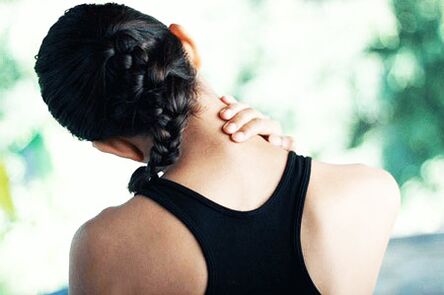
These are the most commonly expressed symptoms that the patient can present.Unfortunately, the process could start developing from young people and teenagers will present these complaints.
More often these symptoms manifest themselves jointly.The osteochondrosis of the cervical column proceeds with the episodes of exacerbation and remission.This is due to the effect of the provocative factors on the body.We must not forget that if a similar diagnosis is carried out, restoration therapy and the rehabilitation course must be performed every six months to avoid a sharp period.
Considering that the main reason for the development of the disease is reduced by the trophies of the intervertebral disc and by the lack of adequate therapy, the process can end in the formation of intervertebral hernia.
Stages and clinical paintings of the disease - Photos
Vascular manifestations in the form of dizziness or headaches intensify when performing elementary motor duties (tilt or rotation of the head).In the aggregate of all the complaints, the patient also tries to take a forced position to reduce the symptoms, which worsens the nutrition of the intervertebral disc.
It is these complaints that most often encourage the patient to see a doctor.If you do not perform a treatment, the complaints will intensify and have a more persistent nature, that is, they will not transmit on their own.
Pain with cervical osteochondrosis, as a rule, constant, painful character, burning.The disease can be accompanied by periodical "bastards", which are caused by acute movements.
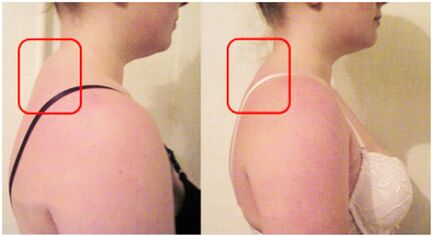
An increase in blood pressure against the background of the osteocondrosis encourages the patient to be examined by the therapist.If you do not perform a competent treatment in a timely manner, an increase in blood pressure will become constant, which contributes to the development of secondary hypertension.In these situations, a correctly assembled story is of great importance.
When the process is located in the cervical region, the unpleasant sensations spread on the rear surface of the neck, the constant tension of the bone muscle system helps to limit the movements and the formation of a forced position of the head.
Pain with cervical osteochondrosis is accompanied by compromised sensitivity.Due to constant discomfort, the muscle roller gradually forms in the shoulder, the patient is unpleasant in this area.
In addition to constant discomfort, the patient can experience severe neck pain.The occurrence of these complaints suggests that the patient must give complete rest to reduce pain.In some cases, pain is so serious that a person cannot perform the simplest actions (he turns his head, makes a deep breath, straightens his back).In all cases, the patient should examine the doctor and confirm the diagnosis of osteochondrosis.
The change in hormonal background also plays a significant role in the development of cervical disease.Therefore, the physical activity selected with competence will reduce the general clinical symptoms and lighten the patient's conditions.Due to the fact that neck pain is constantly worried, secondary sleep disorder occurs.It is difficult for a person to take a comfortable position in the bed, worries, which leads to psycho-emotional stress.
In addition, the patient pays attention to sensitivity.Describe them as "goosebumps" who feel at hand.In some cases, unpleasant sensations can be located in the whole hand, muscle strength decreases.
Diagnosis of the disease
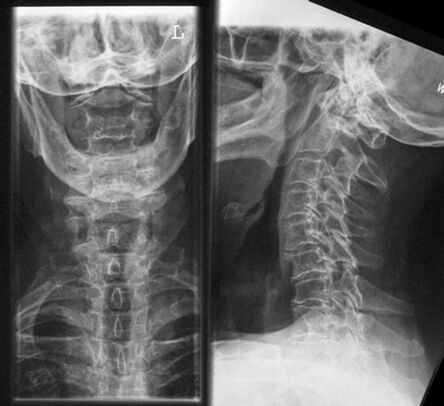
It is quite difficult to make a diagnosis based on an exam.Basically, the following measures are performed to clarify the diagnosis:
- in -depth collection of complaints;
- Consultations of specialized specialists (cardiologist, endocrinologist, neurologist);
- X -ray examination of the cervical column;
- Magnetic resonance imaging tomography.
Inspections of specialized doctors are needed to exclude the acute states of the cardiological profile and others.With the exclusion of acute somatic pathology, we can speak of the diagnosis of osteochondrosis.In addition to the general clinical manifestations, the diagnosis can be confirmed using an X -ray examination of the spine.
X -Ray is the most convenient and easily in progress study that helps to establish a diagnosis.In the photo you can see the narrowing of the space between the vertebrae, which indicates the dystrophy of the intervertebral disc.Along the edges of the vertebrae, bone extensions can be distinguished.If osteochondrosis is complicated by the instability in the cervical region, the X -ray X can be seen from the movement of the vertebrae compared to each other.
The osteochondrosis of the cervical column is a disease that can radologically show which area is more damaged.Even when examining a cervical segment, it can be seen that the process is not uniformly common.
In particularly complex cases, magnetic resonance imaging tomography is performed, which helps to diagnose the complication of osteochondosis-intervertebral.Thanks to the layer of magnetic resonance layer, even the most minimal hernias and immediately indicate the level of damage.
Treatment of the osteocondrosis of the cervical column
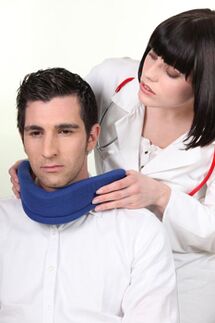
Only a doctor knows how to treat cervical osteochondrosis in an acute and transfront period.Therapy, which is prescribed for this state, should be complex.When they exacerbate the disease, it includes:
- drugs;
- complex recovery therapy (physiotherapy exercises, gymnastics, massage, acupuncture, manual therapy);
- physiotherapy (electrophoresis, uhf, magnetotherapy, laser therapy);
To prevent the exacerbation of the osteocondrosis, they resort to:
- Sangerum-resort treatment;
- popular medicine;
- Wear special bandages and corsets;
- change in lifestyle (weight loss, balanced physical activity).
The medicines for the treatment of osteochondosis of the cervical column are as follows:
- anti -inflammatory drugs;
- drugs that improve blood circulation;
- vitamin complexes;
- in acute situations of analgesics;
- It means that reducing muscle tension.
In addition to pills and injections, creams, ointments and gels they are actively prescribed, which are applied to the affected area.With their influence, they contribute to the irritation of the skin in a certain area, which improves blood circulation in small vessels, thus guaranteeing the release of nutrients to damaged segments and muscle tension decreases.

After an acute period, physiotherapy, massage and physiotherapy exercises are signed.Riparous therapy is an addition to the main pharmacological treatment.As the condition will improve, even the power and the intervertebral disc trophic will be better.
Based on the background of the treatment, the patient will notice an improvement in well -being, an increase in performance and mood.If the treatment is stopped without finishing, the exacerbations of the osteochondrosis will often be approved.
The rehabilitation will say how to treat cervical osteochondrosis in the recovery period.Before talking about a reparative therapy complex, it should be noted that any treatment should be accompanied by a correction of sleep accessories.These include orthopedic mattresses and cushions.
Experts also recommend wearing a Chanstz collar constantly or for a certain period of time.This method is particularly widely used in children's practice, when patients dress it for the period of tasks.The Shanz collar is selected individually in orthopedic salons.
The orthopedic cushion for cervical osteochondrosis is selected for each patient.It should be suitable for the size of the bed and selected according to the patient's constitution.It should not be very small or very large, the main guideline is the width of the person's shoulders.
A cushion for a long sleep and rest should be of medium rigidity and look like a square or rectangle shape.The cushions of a different form are suitable for a short rest.Depending on the activity of the degenerative process, the orthopedic cushion for cervical osteochondosis should change.
Exercises and gymnastics (exercise therapy)

Riparous therapy must be attributed to gymnastics.The main task of the exercises is to strengthen the muscles of the neck and back, the upper shoulder belt, improve the mobility of the spine and the elimination of muscle terminals.In addition, the exercises for cervical osteochondosis affect the muscles deeply positioned.
As a result of gymnastics with cervical osteochondrosis, physiological curves are gradually restored and the load on intervertebral discs is reduced.We must not forget that the exercises for the cervical osteochondrosis should also capture the segments of the breast.
Gymnastics for cervical osteochondrosis is performed with an instructor.It helps patients understand which areas to concentrate on.The load and volume of the activities are selected individually and depends:
- From the age of the patient;
- From the prevalence of the process;
- the availability of further concomitant diseases;
- From the effectiveness of drug therapy.
Firstly, simple and not complex tasks are performed, when the body begins to adapt to new conditions and the muscles perform its work in sufficient volume, the exercises are complicated and the duration of the classes has increased.
LFK for cervical osteochondrosis includes simple actions.These are tilting their heads forward and backwards, gradually add circular head movements.It should be borne in mind that also for physical medical education it can be contraindications.As a rule, the complex of a lesson includes tasks that are aimed at developing and influencing all the segments of the spine.
After exercises in the cervical region, they gradually add tasks to improve the work of the chest and lumbar.Physical education of the media for cervical osteochondrosis can be performed in an erect or sitting position.The tasks are carried out based, at a short period, this will allow the addition to respiratory gymnastics.
Contraindications to physiotherapy exercises:
- acute pain syndrome;
- increase blood pressure and the presence of heart disease in the acute phase;
- Coordination and disease violations of the vestibular apparatus;
- fever;
- exacerbation of another chronic pathology;
- condition after surgical treatment.
Exercises on special equipment
This technique is based on a gradual restoration of the normal activity of the bone muscle system.The gymnastics exercises performed on a specialized simulator allow to gradually restore the work of the structures of the cervical column.
First of all, the pain is raised, therefore the blood circulation is restored, the muscle tension is removed and the classes are performed to expand the motor activity in the cervical region.The method is also supported by massage courses, classes in the pool.
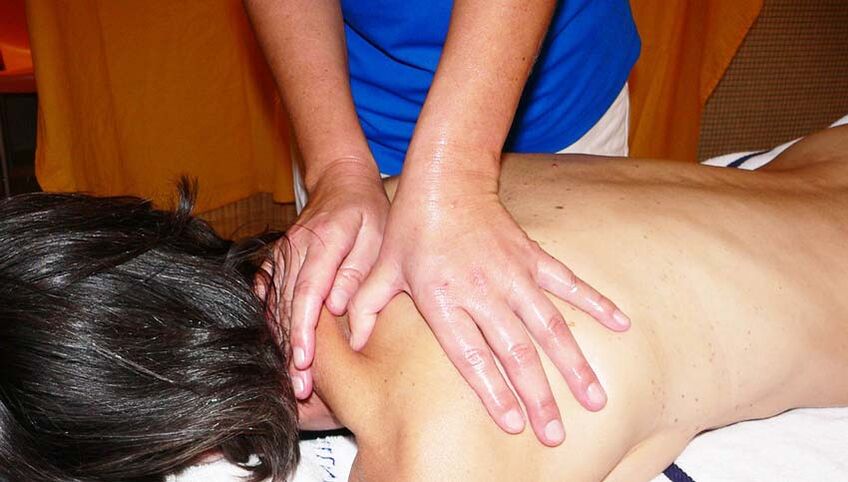
Osteochondous massage of the cervical column
In addition to the general strengthening classes, a very good effect offers a massage.The massage for cervical osteochondosis can be used by different (classics, segmental, points).In some cases, a combination of various techniques is allowed in a session.
We must not forget that the massage with cervical osteochondrosis is performed on a solid surface, face down and its duration can vary from ten sessions or more.The frequency of repetition of the course is also determined by the attending physician.The efficiency of the massage will last longer if the patient sleeps on a well -chosen pillow.
Physiotherapy procedures such as magnets or electrophoresis have a local irritating effect.Magnetotherapy is a painless procedure that is well tolerated by adults and children.The manipulation lasts several minutes, the patient should lie motionless, therefore, the oldest patients are often recommended.
The electrophoresis is a manipulation that is performed using a special device.During the procedure, the patient feels a slight tingling tingling, which is created using currents.The frequency and impulsiveness of the signal for every age are his. With the help of this technique, the introduction of a drug is performed, which has a positive effect.This manipulation is more aggressive than magnetotherapy, therefore, there should be rigid indications for its implementation.
With the help of this technique, the introduction of a drug is performed, which has a positive effect.This manipulation is more aggressive than magnetotherapy, therefore, there should be rigid indications for its implementation.
A balanced diet is of great importance in this disease.Patients are recommended to eat fruit, vegetables, meat, vegetables, fish.The consumption of salt and all types of spices, condiments, smoked or fried products, the sugar should be limited.It is better to drink decoctions and tea of plants, it is advisable to avoid the use of coffee and alcohol.
The use of traditional medicine aims to reduce pain.Very often compressions and mixtures are used, which are superimposed on the damage area.The success in the treatment of osteochondosis of the cervical column depends largely on the patient's consciousness.Do not launch lessons and therapy, as soon as you felt better.It is irrational to constantly use painkillers that bring temporary relief and the disease itself is not treated.


























